Boris Rodnyy
Year of birth: 1964.
Where do you live: Warsaw, Poland.
Your education: Mechanical Engineer, Institute of Space Engineering.
Describe your art in three words: Magic, Cosmos, Future.
Your discipline: Graphics, Digital Art, Acrylic Painting.
rodnyy.com
Your work often evokes a sense of both symmetry and mysticism. Could you share your process for creating such intricate compositions?
For me, symmetry is the interplay of chaos and cosmos (where cosmos equals chaos; cosmos is ordered chaos), the empty and the full, yin and yang, the inside and the outside. Nothing in the world is perfectly symmetrical or identical: even the two halves of a person’s face are not the same, and even twins are different. This is the mystique of the world around us – it is never predictable, and it is fluid. What you once perceived as white may later appear black, and vice versa. Symmetry represents a balance of opposites in the macrocosm we inhabit. It is crucial to feel the boundary while recognizing the universality of the parts that organize this balance. This feeling embodies the Daoist attainment of the Middle Way and the unity of being with all existence that I strive for through my art.
The process of creating compositions begins with intuitive, almost automatic drawing, where I allow lines and shapes to emerge spontaneously, following the energy that guides me. My artwork often has a conditional axis of symmetry, but I also leave room for spontaneous deviations, which I call fluctuations, reflecting the fluidity of the universe. As the painting progresses, individual elements merge into cohesive structures, forming intricate compositions. Mysticism manifests itself through hidden meanings embedded in the patterns and symbols I convey, sometimes unconsciously, accessing them on a sacred level. You could say that they use me rather than the other way around. Thus, these compositions become a form of meditation in visual form, where each line and shape finds its place within the overall picture.
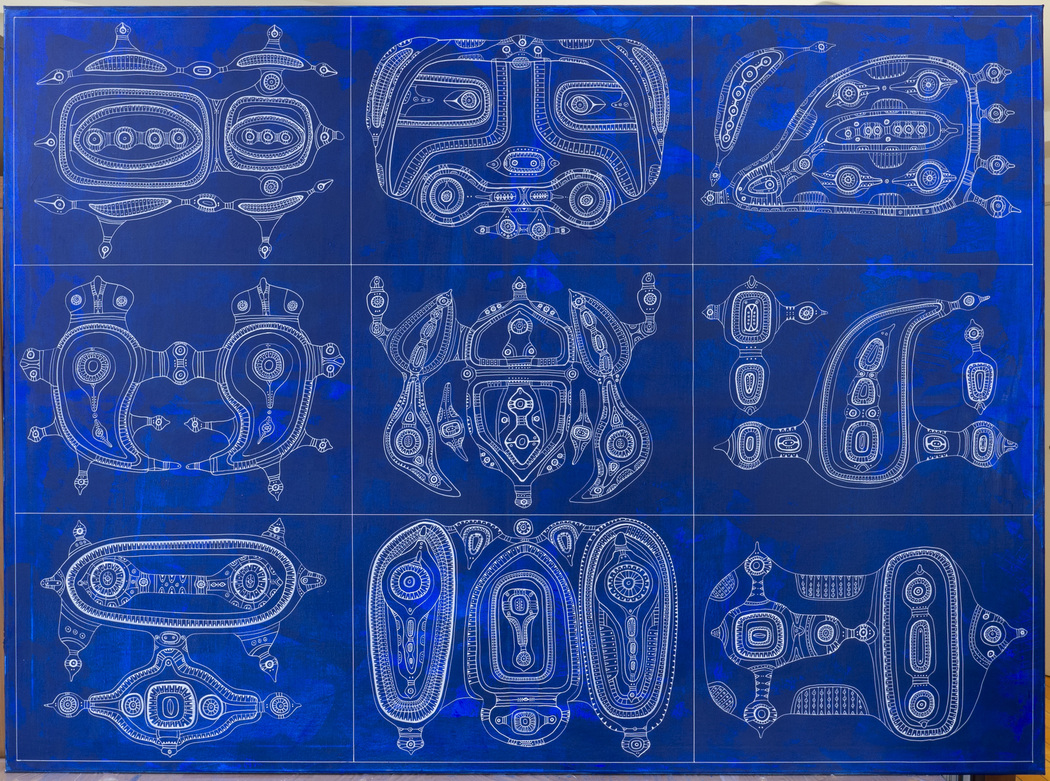 Boris Rodnyy | Message | 2024
Boris Rodnyy | Message | 2024
How has your exploration of Eastern philosophies like Daoism influenced your artistic practice and the symbolism in your works?
I have been deeply influenced by Eastern philosophies, especially Daoism. I resonate with the Daoist theory of interdependence and the attainment of harmony and balance through meditation, as well as the ability to work with energy, exemplified by the “intention and energy” method I learned in Tai Chi Chuan. These ideas and principles form the foundation of my artistic practice, where I focus not on managing the creative process, but on allowing images to emerge through my creative work.
The symbolism in my work is also imbued with concepts from Eastern philosophy. For example, the circle as a symbol of eternity and unity, lines that convey energy flows, and symbols that represent the connection between the earthly and the celestial, as well as the masculine and the feminine – all of these elements are reflected in my creations. Daoism has taught me to work with consciousness and to flow with the currents of life, integrating the physical and the spiritual.
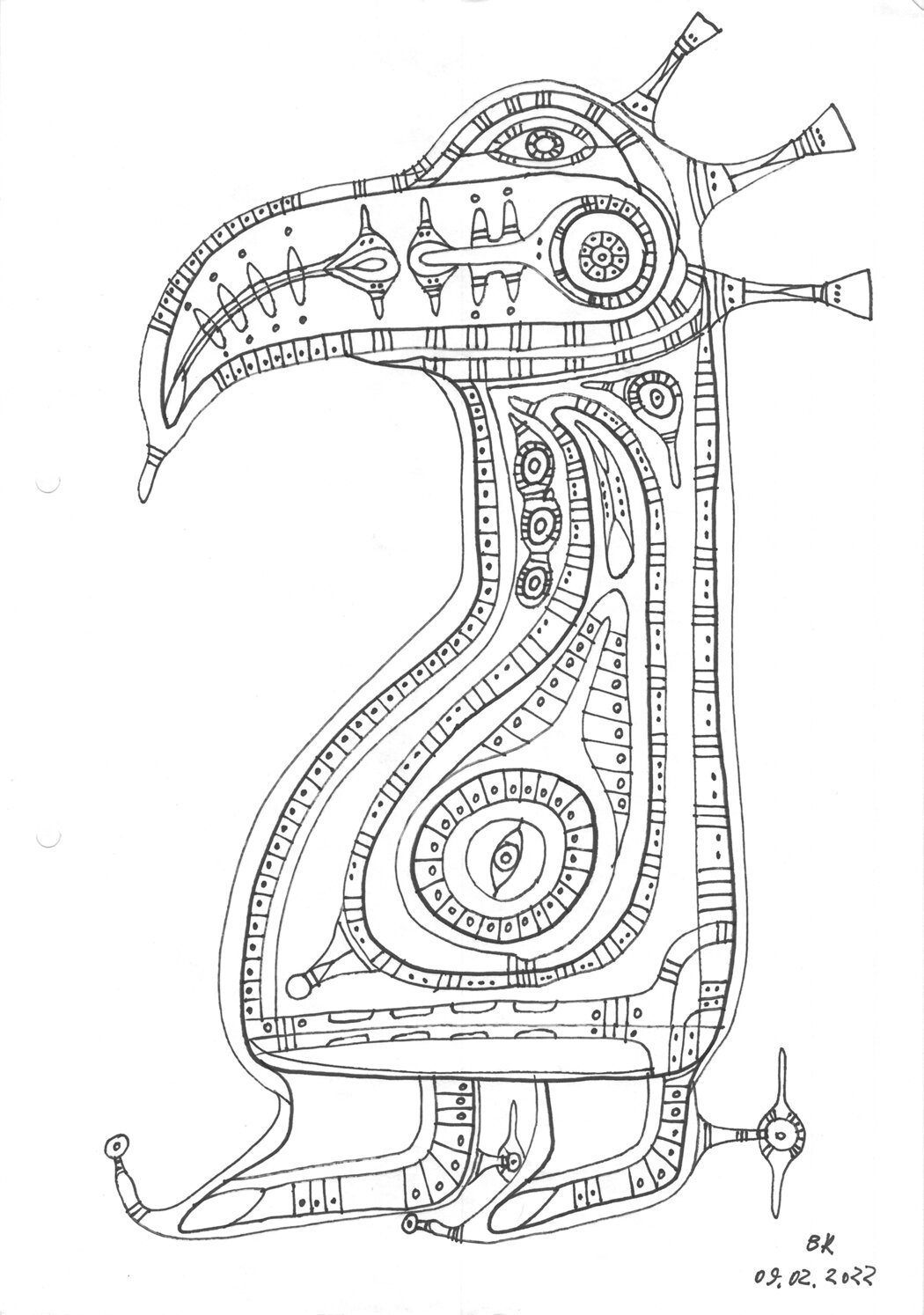 Boris Rodnyy | #13 | 2022
Boris Rodnyy | #13 | 2022
You mentioned the importance of “intention and energy” in Tai Chi Chuan. How do these concepts translate into your visual art?
Intention and energy play a crucial role in Tai Chi Chuan, and I integrate these practices into the creative process and my artwork. As I create, I consciously infuse each line and shape with intention, allowing energy to flow freely through my body and hand. This process is similar to a meditative state in which each stroke becomes an expression of the energy that guides my creativity. The eighth principle of Tai Chi Chuan states that there are three types of energy: our body as a carrier of realized energy – kinetic – and free potential energy that we can use, with thought also being a form of energy. Consciousness and body can only unite by “dissolving” into a unified field of qi – wholeness. Thus, my work creates a field for attaining wholeness and even health, as the realization of the spiritual within the physical represents health. Both I and my viewers achieve wholeness through my work.
Art serves as a form of visual meditation through which my intention and energy create a deep emotional response in the viewer. My artwork is filled with a vital and cosmic force that often resonates with those who view it, creating a sense of connection to something greater than the physical world.
Your drawings appear almost like maps or blueprints. What inspired this approach to design, and what deeper meanings do these “cosmogonic” structures hold?
My drawings truly resemble maps or blueprints due to my engineering background, which has taught me to communicate complex concepts through simple lines. This approach allows me to create “blueprints” of an archetypal universe that reflect the sacred codes of humanity, where each element has its own meaning and symbolic significance. In my works, I combine body and soul, substance and information, memory and genetics, emphasizing their structural similarities.
The cosmogonic structures in my artworks are an attempt to reflect an underlying order and harmony that governs the universe. We do not definitively know the origins of the Nazca Lines or the pictograms and symbols of the Incan, Mayan, Aleut, and Aztec deities, as well as the Mesoamerican codices. I believe that art can serve as a visual map that guides us to a realm beyond our ordinary perception. My compositions act as codes that provide pathways to a deeper understanding of the connection between the earthly and the cosmic. Each line and shape in these “maps” serves as a link between the past, present, and future; they constitute a “geographical map” of a celestial, universally human “landscape,” traveling where the viewer can discover himself, his “self,” his own harmony, and his own path.
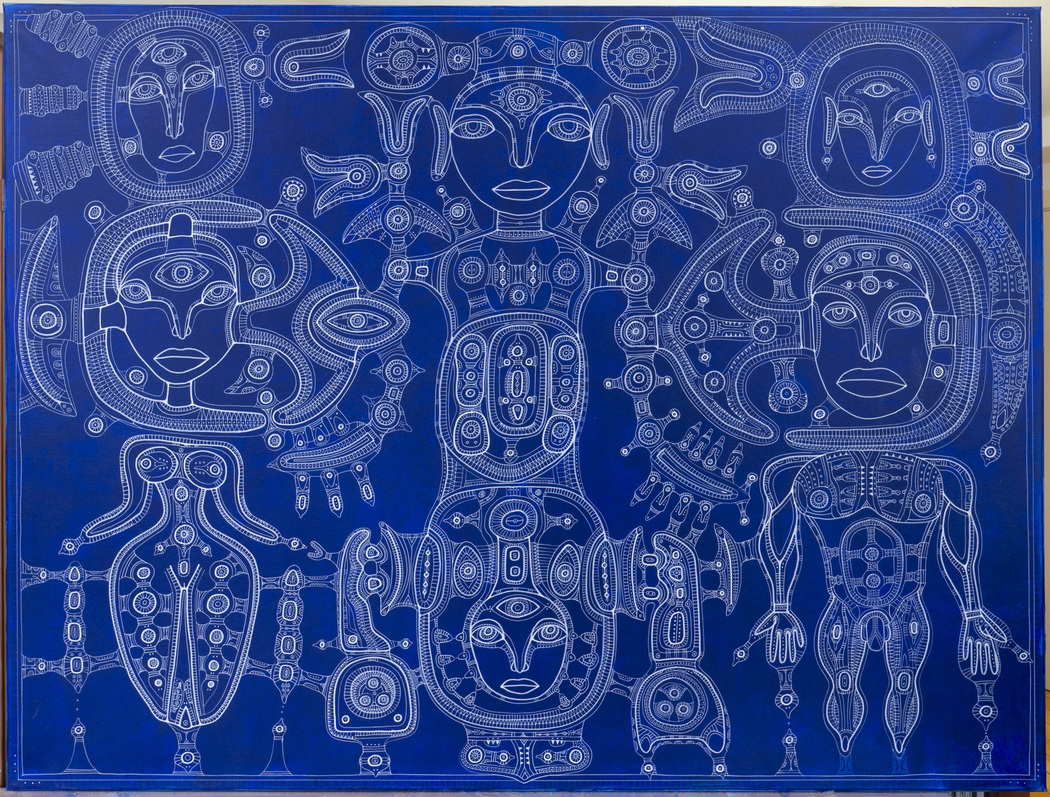 Boris Rodnyy | Masculinity | 2024
Boris Rodnyy | Masculinity | 2024
The themes in your work seem to merge Eastern and Western aesthetics. What challenges do you face when integrating such different philosophies and visual languages?
I have a deep appreciation for all cultures, but I’m particularly drawn to Eastern aesthetics and philosophy over Western and European. The main challenge is to achieve a harmonious balance between these different philosophies and aesthetics while preserving their unique qualities. Eastern philosophy emphasizes harmony, cyclicity, and a nature-centered approach, while the Western tradition emphasizes individualism, logic, and progress. However, these differences are becoming increasingly blurred as European culture now often turns to Eastern philosophical systems and aesthetics, especially in the context of the desacralization of humanity in the Western world, amidst political and military conflicts, creating significant tensions for individuals and society. Eastern philosophical schools, expressed through aesthetics and culture, help to overcome existential crises and the erosion of spiritual values, demonstrating the unity of humanity with the world and the universe. I believe that the concepts of “Western” and “Eastern” aesthetics relate to styles because when we look at the ancient archetypal symbols of humanity, we find that many ancient signs visually coincide. This is a universal language of humanity, and we are all siblings.
In creating my artwork, I strive to integrate these two cultures in a way that not only complements each other but also creates new forms of expression. This requires a deep understanding and sensitivity to both traditions. For example, I might use Eastern symbols and concepts of harmony in composition while incorporating Western elements such as logical structure or a focus on individuality.
Finding this balance is a process that requires a certain state of mind and constant reflection. My goal is to create works that are understandable and meaningful to people with different cultural and philosophical perspectives, offering them new insights through the fusion of these two worlds.
How do you perceive the role of mythology and spiritual practices in contemporary art, and how do they shape your own work?
Mythology and spiritual practices play an important role in contemporary art, seeking existential solutions for humanity in a world where technology does not nourish the spirit. Myths are central to my work. I see them not only as a source of inspiration, but also as a means of transmitting profound knowledge and wisdom. Myths are archetypal stories that reflect the fundamental laws and principles of the universe, while spiritual practices help me connect with this knowledge on a deeper level.
In my art, I strive to combine mythology and spirituality, creating unique symbols and images that resonate with the language of the collective unconscious. These elements allow me to convey not only visual impressions but also deeper meanings related to the search for inner truth and understanding of the world.
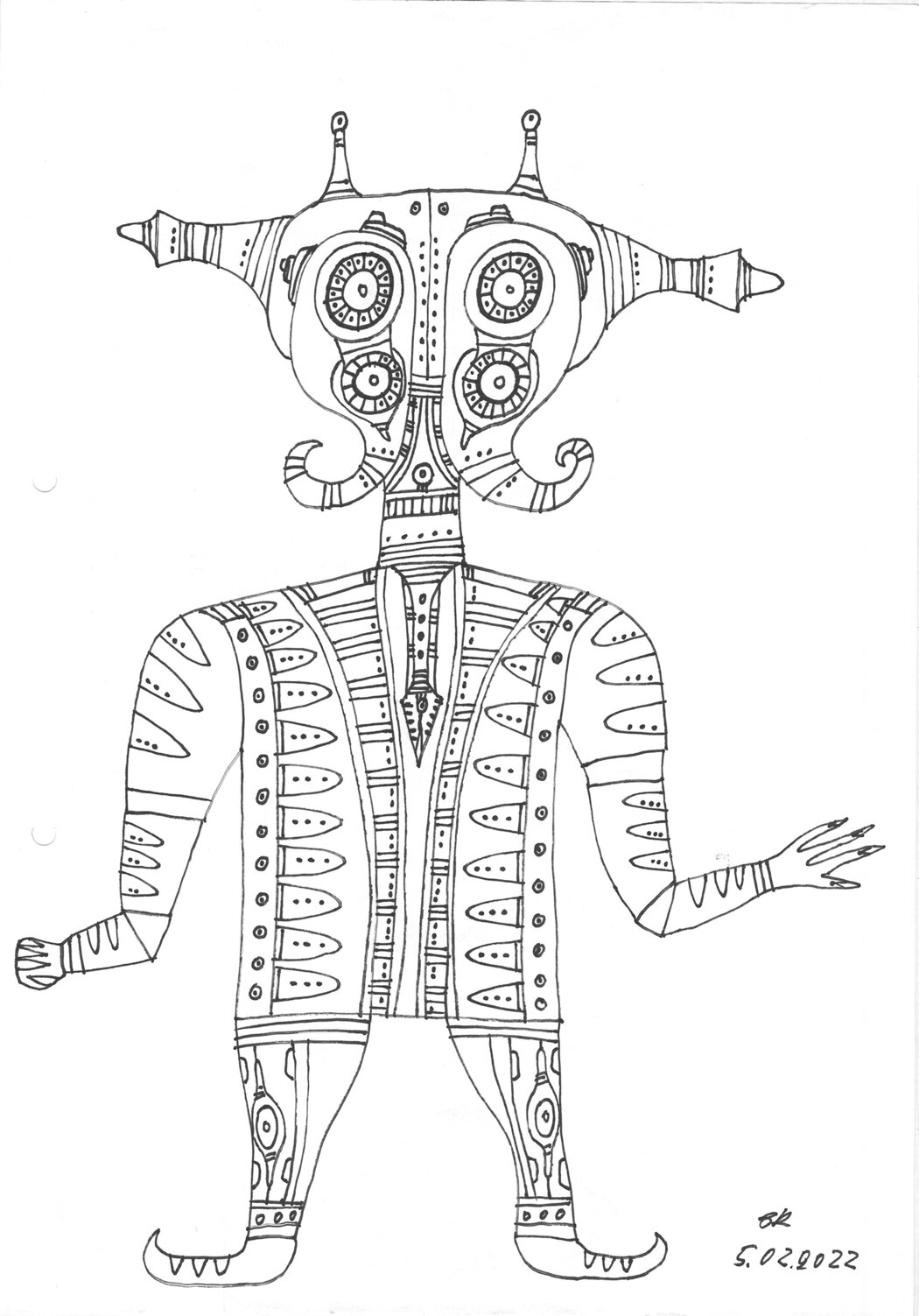 Boris Rodnyy | #04 | 2022
Boris Rodnyy | #04 | 2022
Being self-taught and drawing from diverse cultural sources, how do you continuously evolve your unique style while staying true to your vision?
I have sought self-expression through the exploration of different cultures, symbolic systems, and philosophies. This process has allowed my style to evolve naturally as I discover new symbols, techniques, and materials. Inspiration from Eastern philosophy and ancient symbols allows me to create works that bridge tradition and modernity while remaining authentic and unique.
My inner vision and philosophy serve as the primary guiding principles in my creative process. Even as I experiment with new materials or techniques, I strive to maintain the core of my art – the principles and ideas that define my distinctive style.
By continually learning and evolving, I discover new ways to express my ideas, which allows me to maintain the uniqueness and depth of my artworks. As the history and culture of humanity is inexhaustible, I have a long journey ahead of me. Ancient codes and spirituality are largely terra incognita for the modern world. By looking back, I am moving forward. I believe that art must evolve with the artist, yet it is crucial to remain true to myself and my own unique artistic journey and path in a broader sense.

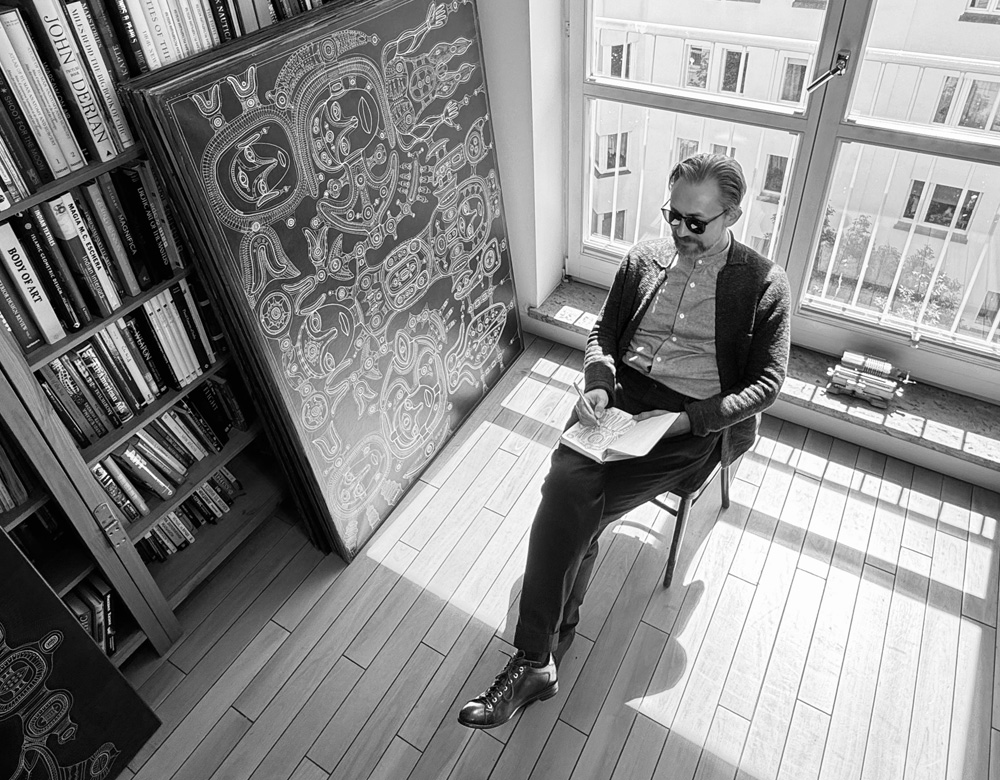
Leave a Reply